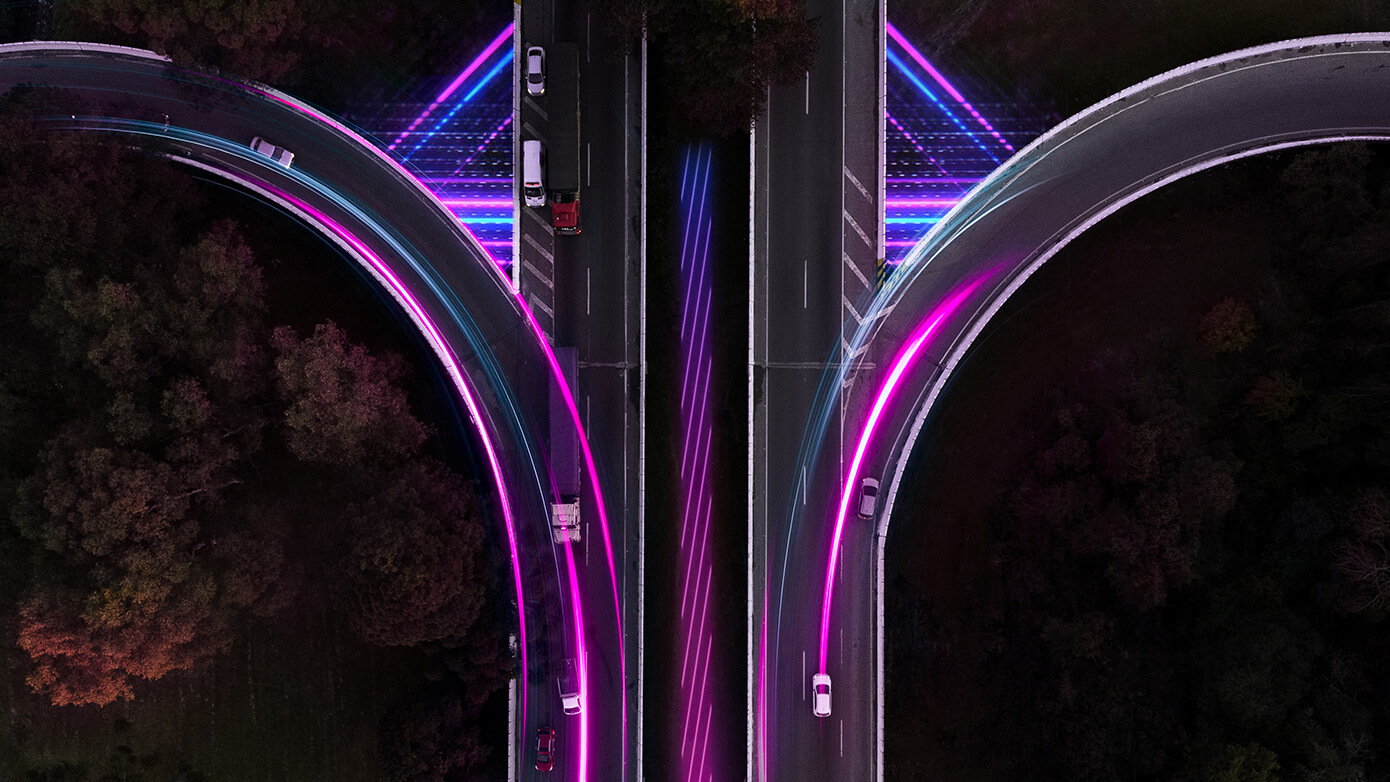The Magic Behind A Click: Supply Chain Continuity In Grocery In 2021
- 18 March 2021
- By Manhattan Staff

2020 was certainly a year of unprecedented challenges for businesses and individuals all over the globe. Amidst the uncertainty, tests and trials of 2020 however, tens of thousands of businesses and hundreds of millions of people showed perseverance, positivity, grit and determination to keep moving forward.
Supply chain continuity has never been more relevant or necessary than it is today almost a year into the global pandemic, and it’s no exaggeration to say that maintaining supply chain continuity over the last 12 months, particularly in the grocery sector, has literally been a lifesaving link for billions of people around the globe – as it continues to be so today.
While increasing numbers of consumers are making online purchases, most will simply press ‘click to buy’ and then forget about their purchase until they receive a courier’s email or text regarding delivery or collection slot.
2020 however, showed that supply chain continuity, resiliency and efficiency are not things to be taken for granted, and the technology, processes and people that enable the magic behind a click are complex and continually evolving to meet shifting consumer behaviour and expectations.
While ecommerce and the weekly online shop might appear to many as seamless or miraculous, there are three key areas that brands need to consider in order to maintain supply chain continuity and uphold those all-important consumer promises: omnichannel capabilities; smart warehouses and distribution centre approaches; and intelligent transportation management capabilities, enabling the smooth delivery of goods.
Step forward Omnichannel
The experiences desired by today’s customers differ as much as their personalities. One customer’s idea of great retail is a high-touch, intimate encounter at their favourite store location. Another customer may seek convenience, using buy online, pickup in-store for prompt delivery.
From the weekly routine of shopping that has come back into fashion over the last twelve months, to digital and mobile interactions, modern grocery retailers need to give consumers the experiences they want without having to sacrifice operational excellence at any stage of the customer journey.
Effective omnichannel retail technology can shatter the boundaries between channels, enabling universal capabilities in any location, at any time, with just one application – key for grocery brands that are continuing to experience online surges.
From headquarters, to the store itself, effective omnichannel solutions mean that everyone can now benefit from the same holistic view of customers and their transactions, regardless of channel, courtesy of social listening, and automated communications.
With tools for inventory visibility improving accuracy and availability across the entire grocery supply chain network, keeping promises and building loyalty is now a reality for all brands big and small. Furthermore, with store inventory and fulfilment, physical retail stores can even become fulfilment points (the boom in micro-fulfilment centres is testament to this) enabled with the technology to operate as effectively and efficiently as distribution centres.
So, what’s next, after your grocery order has been placed?
The rippling effects of the connected consumer and the impacts of a fast-and-free fulfilment economy have significantly changed the supply chain landscape in the past decade (especially in the grocery sector), attaching a premium to the notion of supply chain continuity.
Today, more than ever, grocery brands and their supply chain leaders need actionable insight across their entire operation from a single, intuitive application.
They need augmented intelligence from AI and machine learning to navigate skyrocketing volumes and decreasing commitment windows, but they also need to creatively engage their work force and integrate automation and robotics capabilities to ensure maximum efficiency of man (and woman) and machine in their warehouses and distribution centres.
A key component of supply chain continuity in our digital, fast-paced age is the combination of all demand, supply, labour, slotting and automation into a precision instrument of efficiency across every facility in the network, regardless of physical size, velocity or volume. If done right, it can transform what a distribution facility is capable of by an order of magnitude.
Sounds complicated right? Luckily help is at hand in the form of Manhattan Active Warehouse Management. This version-less, micro-service architected software never needs upgrading, meaning grocery teams can focus on the quality of products and experiences, rather than systems.
While the warehouse and distribution centre stage of supply chain continuity might not appear quite as glamorous as a flashy, online omnichannel suite of applications, it is however, arguably the most critical of the three stages for retailers and none more so than the grocery industry which deals with so much perishable produce.
Well begun is only half finished however, and the final piece of the supply chain continuity puzzle for grocery comes from the transportation and actual delivery of goods, be that at a wholesale or individual consumer level.
From warehouse floor, to store and door
The boom in ecommerce over 2020 saw more items and more vehicles moved, more often than ever, making it hard for even the most experienced shippers to plan and execute plans.
A lack of transportation visibility, volatile fuel prices, reduced capacity, new tariffs, governmental regulations and international lockdown protocols, have all had a hand in higher costs and more pressure on already squeezed margins.
Transport management systems therefore need to become more flexible and responsive to price and service pressures in order to harmonise inbound and outbound logistics management and carrier management resulting from the increasing demands weighed upon them by omnichannel customer expectations.
This means that optimisation is no longer just an issue for large global carriers and shippers. The changes in consumer delivery expectations, the reduction in store sizes, and the effort to reduce safety stocks have created a ‘just-in-time’ expectation of transportation that affects every brand today, big or small, regardless of location.
In 2021 with the recent Terra Carta initiative, the US signalling it will re-join the Paris Climate Accord and COP26 in the UK in November, the battle between profitability versus sustainability is well and truly on. In the current era of next-day fulfilment, organisations that embrace optimisation will not only increase profitability, but also lower carbon footprints and promote more sustainable development, in the process reaping long-term rewards.
So, what does that all mean for a modern transportation management system? In short, the systems of today (and tomorrow) will have to juggle a lot more moving parts than their predecessors.
From strategic analysis, procurement, and operational planning to execution, visibility, and freight payment or claims, when you optimise for less mileage, less time in traffic, and more efficiently loaded vehicles, you minimise costs, maximise profitability and drive sustainability – that can only be a win-win for brands, consumers and the planet overall!
Supply chain continuity has always been critical, but the events of 2020 have shone a spotlight on this area of global commerce like never before.
From omnichannel capabilities, to smarter warehousing and more efficient, greener transportation management solutions, the components that ensure supply chain continuity today are certainly complicated. However, the payoffs and efficiencies (monetarily and from an environmental perspective) they are driving today will be of pivotal importance to grocery brands looking to meet the shifting demands of tomorrow’s consumers, stay in the black and go green all at the same time.




